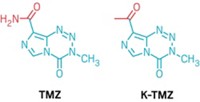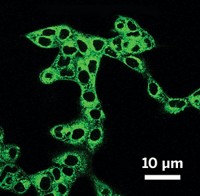Advertisement
Grab your lab coat. Let's get started
Welcome!
Welcome!
Create an account below to get 6 C&EN articles per month, receive newsletters and more - all free.
It seems this is your first time logging in online. Please enter the following information to continue.
As an ACS member you automatically get access to this site. All we need is few more details to create your reading experience.
Not you? Sign in with a different account.
Not you? Sign in with a different account.
ERROR 1
ERROR 1
ERROR 2
ERROR 2
ERROR 2
ERROR 2
ERROR 2
Password and Confirm password must match.
If you have an ACS member number, please enter it here so we can link this account to your membership. (optional)
ERROR 2
ACS values your privacy. By submitting your information, you are gaining access to C&EN and subscribing to our weekly newsletter. We use the information you provide to make your reading experience better, and we will never sell your data to third party members.
Biological Chemistry
Image-Guided Drug Design
Research team incorporates brain scans into iterative process to find drugs capable of penetrating blood-brain barrier
by Lauren K. Wolf
May 26, 2014
| A version of this story appeared in
Volume 92, Issue 21
To treat brain disorders such as schizophrenia, not only do drugs need to be potent, but they also need to slip past the defenses of the blood-brain barrier to reach their targets. Looking for ways to fill this tall order, a research team led by Jacob M. Hooker of Harvard Medical School and Sung Won Kim of NIH’s National Institute on Alcohol Abuse & Alcoholism has developed a drug design strategy that combines brain imaging and lab assays (ACS Chem. Neurosci. 2014, DOI: 10.1021/cn500021p). The scientists began with a promising anticancer compound, MS-275, that blocks the enzyme histone deacetylase (HDAC). “It had been reported that it was a long-lasting inhibitor that gets into the brain,” Hooker tells C&EN. But when the team placed a radiolabel on the molecule and used positron emission tomography (PET) to image its uptake in the brains of baboons, they were disappointed. Undeterred, the researchers modified the compound, ran a few new versions of it through an assay to check for HDAC activity, and ran the PET scans again. After a few more rounds, the researchers hit upon a series of HDAC inhibitors capable of penetrating the brain. According to Hooker, the strategy offers a way “to optimize a series of candidates for brain penetration.”




Join the conversation
Contact the reporter
Submit a Letter to the Editor for publication
Engage with us on Twitter